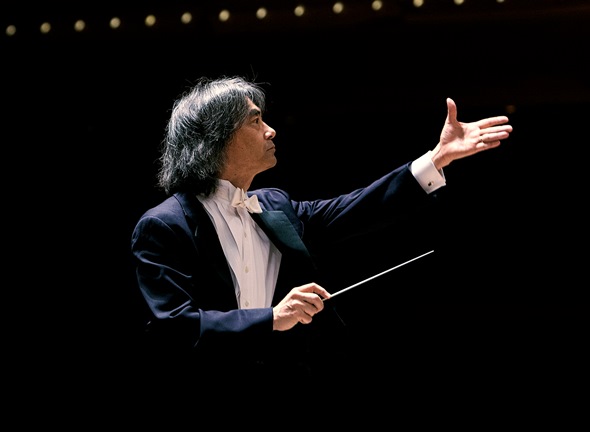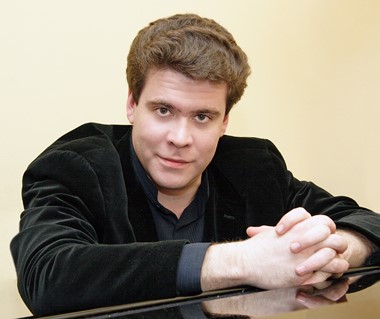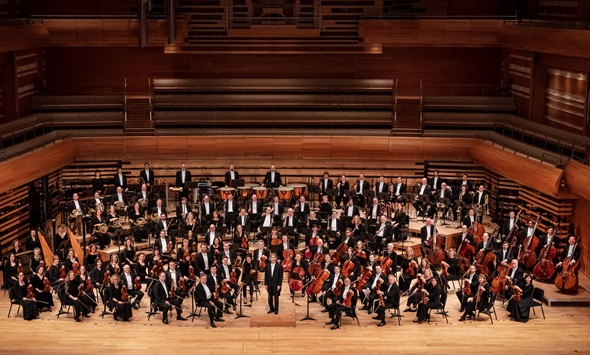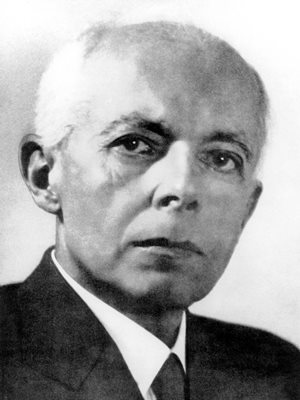Orchestre symphonique de Montréal, playing
in several perfect accents, delivers a thriller
Review: Montreal Symphony Orchestra conducted by Kent Nagano; Denis Matsuev, piano. At Orchestra Hall.
By Lawrence B. Johnson
It was quite some display of virtuosity, of sure-fire musical panache, that the Montreal Symphony Orchestra and music director Kent Nagano offered Oct. 15 at Orchestra Hall. With a sumptuous encore of Ravel’s grandly wrought “La valse,” the visitors might have been saying, “We can do this all night.”
But by that point, after a sterling account of Bartók’s Concerto for Orchestra, Nagano’s splendid ensemble was beyond needing to prove anything. “La valse,” opulent and sensuous and undulating, wasn’t so much a statement as a gift – one received with stormy gratitude by an audience notable for its intermission chats in French.
To the folks back home, Nagano’s band is the Orchestre symphonique de Montréal. And as that seductive parting postscript of Ravel made très clair, the Montreal Symphony – by whichever name you may wish to call it – can play with a French accent.
Yet before its Gallic exit, Montreal had generously exhibited its international range, first in a bravura turn through Rachmaninoff’s Rhapsody on a Theme by Paganini with pianist Denis Matsuev and then with the night’s pièce de résistance, a glittering performance of Bartók’s Concerto for Orchestra.
Actually, the concert began, on rather shaky ground, with Prokofiev’s “Classical” Symphony, a sly wisp of an obeisance to Haydn. Though barely 15 minutes long, brief even by 18th-century standards, the “Classical” Symphony exhibits and elegance and transparency – and wit – worthy of Haydn himself. It casts an exacting light on the strings, and, at least in the opening movement, Montreal’s sounded less than coherent. But Orchestra Hall is a notoriously difficult place for musicians to hear each other; by the second movement, a warm-hearted Larghetto, the strings had coalesced and there were no further problems the rest of the night.
Rachmaninoff’s Paganini Rhapsody, 24 variations for piano and orchestra on the legendary violinist’s solo Caprice No. 24, enjoyed an ideal match in Matsuev’s limitless technical facility and the Montreal Symphony’s luxurious sound. The dreamy 18th variation must be one of the most widely recognized tunes ever penned, and Matsuev imbued it with an easy, expansive radiance. But elsewhere he also summoned all the brilliance and energy required to put this dazzling music over the top. Nagano and company were with him every twist and flourish of the way.
Ever since its premiere 75 years ago, Bartók’s Concerto for Orchestra has represented a sort of litmus test for thoroughgoing orchestral virtuosity. So central is its place in the repertoire that, despite the existence of other works by the same name, mention of the Concerto for Orchestra among concertgoers scarcely requires attaching the name of the composer. Sort of like referring to the “Pastoral” Symphony without mentioning Beethoven.
Across the arch-like structure of its five movements, Bartók’s concerto unfolds in an exhilarating tapestry of invention, elegance, wit and sheer sonorous glory. Turn by turn, Nagano led a performance that delivered on both the work’s great technical demands and its exacting transparency.
Nagano’s interpretive flair and the orchestra’s assured response were perhaps crystallized in the second movement, which Bartók titled “Game of the Couples,” and in the rhapsodic finale. That “game” pairs off the winds in sequence, then the brass instruments, in a perky progression – or perhaps a round-robin challenge of “match this if you can.” It’s a chance for star players to revel in the spotlight, and Montreal’s leading lights turned the exhibition into heady fun.
The concerto’s finale is an absolute burner, a whirlwind at once impulsive and majestic. Nagano and company made electrifying work of it, surging toward endings that only seem to be endings, backing off only to ramp up again in a breath-stopping bravura tumult of cascading sound.





